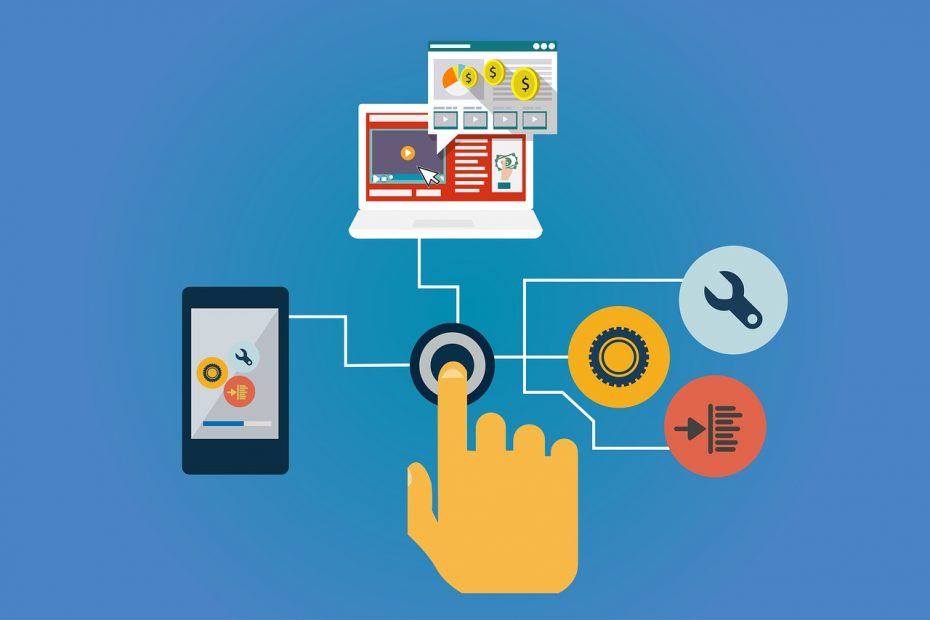Even the smallest of businesses can experience challenges in managing transactions. For example, a business might face difficulties with keeping accounting books in order or managing credit card payment processing.
Where payment processing is involved, it is vital to appreciate how to best utilize the various tools offered by existing payment process platforms as well as how to locate a more suitable option for efficiently managing transactions.
Small Business Payment Options That Customers Prefer
Recent data reveals some fascinating data about customer preferences regarding payments:
- Innovations preferred. Consumers prefer to utilize digital wallets, tap-to-pay platforms, payment terminals, smartphone applications, and online payment methods when paying for both goods and services.
- More payment methods leads to more customer choice. Many customers find that the range of available payment options influences a customer’s choice about what company’s services to utilize.
- Credit cards viewed as safe. Most customers believe that utilizing a credit card on an online portal is as safe (or sometimes safer) as making an in-person transaction.
- ACH/bank-to-bank transfers preferred. Consumers are more likely than not to pay with an Automated Clearing House (ACH) or bank-to-bank transfer instead of credit cards.
- Cashless payment methods to continue. Most consumers intend to continue utilizing cashless payments.
What “Small Business” Payment Processing Means
Fortunately, with online payment processing, automatic transactions between customers and merchants are simple. Accepting online payments is vital for streamlining your business’s finances, increasing sales, and providing customers with flexible services.
Small businesses should invest in the required tools if they are interested in proper and safe implementation and execution of payment processing.
Each of a business’s workers should become familiarized with the nuances involved with online payment processing to determine the best payment solution for small businesses.
At Bankful, we routinely assist both start-ups and small businesses in safely and effectively processing online payments. We even created the following small business payment processing guide to help you avoid missing gaps anywhere in the process.
Who Participates in Payment Processing
While you need not necessarily be a payment processing expert, appreciating the fundamentals, as well as the involved parties, can be helpful.
The most vital participates in the payment process, include:
- Customers. These are the individuals who purchase your business’s goods or services and then proceed to the register to select a payment method. After the necessary payment details, the customer then checks out.
- Merchant. Online sellers are merchants who receive the customer’s payments and then provide them with either products or services in exchange.
- Merchant accounts. Before the money made from your sale is transferred to your business account, the funds remain in a merchant account. Every business that accepts online payments must create a merchant account, which some payment processors even provide automatically.
- Payment gateways. When online transactions occur, a customer’s payment details must pass through a payment processor’s gateway. Doing this ensures that a customer’s financial data remains safe until funds pass to a merchant account.
- Payment processor. These are the entities that address online transactions on behalf of businesses. These processors then securely relay data, verify that the required funds exist, then either approve or reject a transaction.

Appreciating How Small Business Payment Processing Works
The two types of online payment processes are: (1) authorizing (when transactions are approved) and (2) settlements (when funds are placed in accounts). This process, however, can change based on a customer’s chosen payment method. The following is a simple explanation of how funds transfer from clients to businesses:
- Customers utilize a credit or debit card to pay for a product or services
- Point of sale (POS) data or information passes through a payment gateway, which makes sure that data is encrypted before being transferred to a gateway processor
- Processors check with a consumer’s issuing bank to determine if adequate available credit exists to make a purchase
- The issuing bank notifies the process about whether the transaction is approved or denied
- The processor notifies a merchant bank to credit an account and sends the business confirmation of the transaction
This process occurs in just a few seconds, during which time the issuing bank relays funds to the merchant bank, which then credits your account.
Valuable Payment Processing Methods for Small Businesses
Businesses must know about the various payment processing options then determine which selection will provide customers with the smoothest experience.
Payment processing options include:
- Debit cards. These are often an easy choice to complete transactions because the issuing bank need not determine whether the customer should be provided credit for the purchase. Issuing banks often promptly accept these transactions provided a customer’s bank account has sufficient funds. Additionally, debit card transactions carry a lower risk than credit card transactions because credit is not issued. Interchange rates (or costs connected to the use of credit or debit cards) are also lower.
- Credit cards. Processing credit card payments often begins with customer purchases. After data is relayed from the processing network to the process, processors then contact the issuing bank to distinguish whether sufficient funds exist in a customer’s account to pay for a purchase. Networks then perform transactions and distribute transaction fees after deciding adequate money exists. After this, funds are transferred to merchant accounts. Businesses must appreciate how this nuanced process works, which include selecting an appropriate POS system, credit card terminals, processing rates, and even more factors if you decide to accept cash payments.
- ACH payment processing. ACH refers to a network that coordinates transactions and electronic payments between institutions without the use of cash, credit cards, checks, or wire transfers.
- ACH payment processing involves several steps, which are routinely utilized for recurring transactions. These steps include:
- Customer authorization. Customers consent to direct bank account payments on the business’s website.
- Transaction initiation. ACH providers or Originating Depository Financial Institutions (banks) receive payment data from businesses or “originating depository financial institutions” (ODFIs).
- Payment requests. The depository financial institution receiving funds obtains the ODFI’s initial payment request.
- Payment processing. The ROFI verifies a customer’s account to make sure that adequate funds are available to satisfy payment costs. Following confirmation, payments are then processed.
- Digital wallet. This method integrates smart devices, which includes smartphones, tablets, smartwatches, and other mobile payments to accept and process payments. Customers need not enter all their data or utilize credit or debit cards to complete transactions because digital wallets save payment data on these devices. This payment method permits cashless and contactless mobile payments by utilizing radio waves to carry signals from customers’ smart devices to POS terminals. Some technologies utilized include Magnetic Secure Transmission (MTS) technology, Near-Field Communication (NFC), and Quick Response (QR) codes. Since many digital wallets are linked to consumer cards, the backend of the payment process is similar to processing credit or debit card payments.
- Payment gateways. This category refers to either independent third-party companies or established merchant services that help with card processing with both brick-and-mortar and online businesses. Payment gateways like Bankful provide customers with improved efficiency, security, and speed in the payment process during encryption.
Businesses must perform adequate research to examine whether small business payment processing offers the solutions best matched to your business’s requirements.
Various payment gateways offer transactional, monthly, and cross-border fees.

The Advantages of Merchant Accounts for Small Business Payment Processing
Some of the most distinct advantages that businesses realize through small business payment processing include:
- Accept credit and debit cards. Accepting both of these options is one of the biggest advantages offered by merchant accounts. Customer preferences for credit and debit cards continue to increase, partially because these options avoid friction in the payment or purchase acceptance processes. This can help businesses obtain new clients while also increasing cash flow.
- Increase sales. Studies reveal that customers often spend more when offered the choice to use either debit or credit cards. One poll performed by intuit determined that 83% of small companies that permitted payment by credit card saw increased sales.
- Better financial management. Businesses realize more efficient transactions by accepting credit cards and offering online payments. Electronic payments help businesses remain organized and improve both forecasting and cash flow.
- Customer experience. By allowing users to make purchases using various methods, merchant accounts often result in satisfied, repeat customers. When customers can easily perform purchases in the way and time they want, they often look forward to doing repeat business with you.
- Avoid receiving bad checks. Businesses can avoid inconvenient expenses associated with bad checks and chargebacks through the use of small business payment processing services and accepting electronic payments. Merchant accounts also allow businesses to accept recurring payments. When merchant accounts are combined with full payment systems, this proves ideal for classes, cleaning, and landscaping.

Small Business Payment Processing and Recurring Payments
Recurring payments refer to automatic charges made to a customer’s debit or credit account for goods and services. To make recurring payments, merchants must allow this choice while customers pay including the choice to have ongoing charges.
For customers to establish subscriptions, they must provide a credit card that is saved as a “card on file”. By letting cards be on file and establishing a recurring payment, customers must approve the initial and each successive payment.
Subscriptions are often labeled as “open-ended”, meaning that customers are charged indefinitely until either: the customer cancels payment or the card used for payment expires.
Various types of businesses help companies begin the process of offering customers recurring payments, which include:
- All-in-one payment processors, which look for solutions to provide recurring billing and tools within payment processing platforms.
- Accounting software, which is best for businesses who want the most basic option to address various billing data
- Subscription management platforms, which exist between merchants and payment gateways to address the operations related to subscription businesses.
Recurring payments let businesses realize additional growth by offering subscription services. Some of the other advantages that businesses realize by making recurring payments available include:
- Optimizing cash flow. With automatic payments, businesses need not be concerned about receiving payments on time. Recurring payments are made on set dates, which means a reliable source of profit for businesses.
- Convenience. Many customers like the option to “set a payment option and then forget it” with bill payment. By setting a payment to be recurring, customers know they need not worry about remembering to pay a bill on time.
- Save time. With an automated billing process, businesses need not manually create invoices monthly. This reduced time means that companies have more time to address other critical business issues.
- Increased security. Customers often find that automatic billing software provides high-level security, which means that customers need not worry about personal data being leaked to hackers or others who will financially exploit this information.
Utilize a Small Business Payment Processing System Today
Not all businesses realize how payment processing works for small businesses. Appreciating the ins and outs of how online transactions occur and are placed in bank accounts help you select payment processors that satisfy the needs of both businesses and customers.
Businesses should consider investing in comprehensive small business payment processing systems that can help to create unique payment plans for each customer and provide accurate data regarding online sales. Bankful provides a range of merchant services that improve the relationship between customers and businesses, which routinely leads to meaningful interactions.

